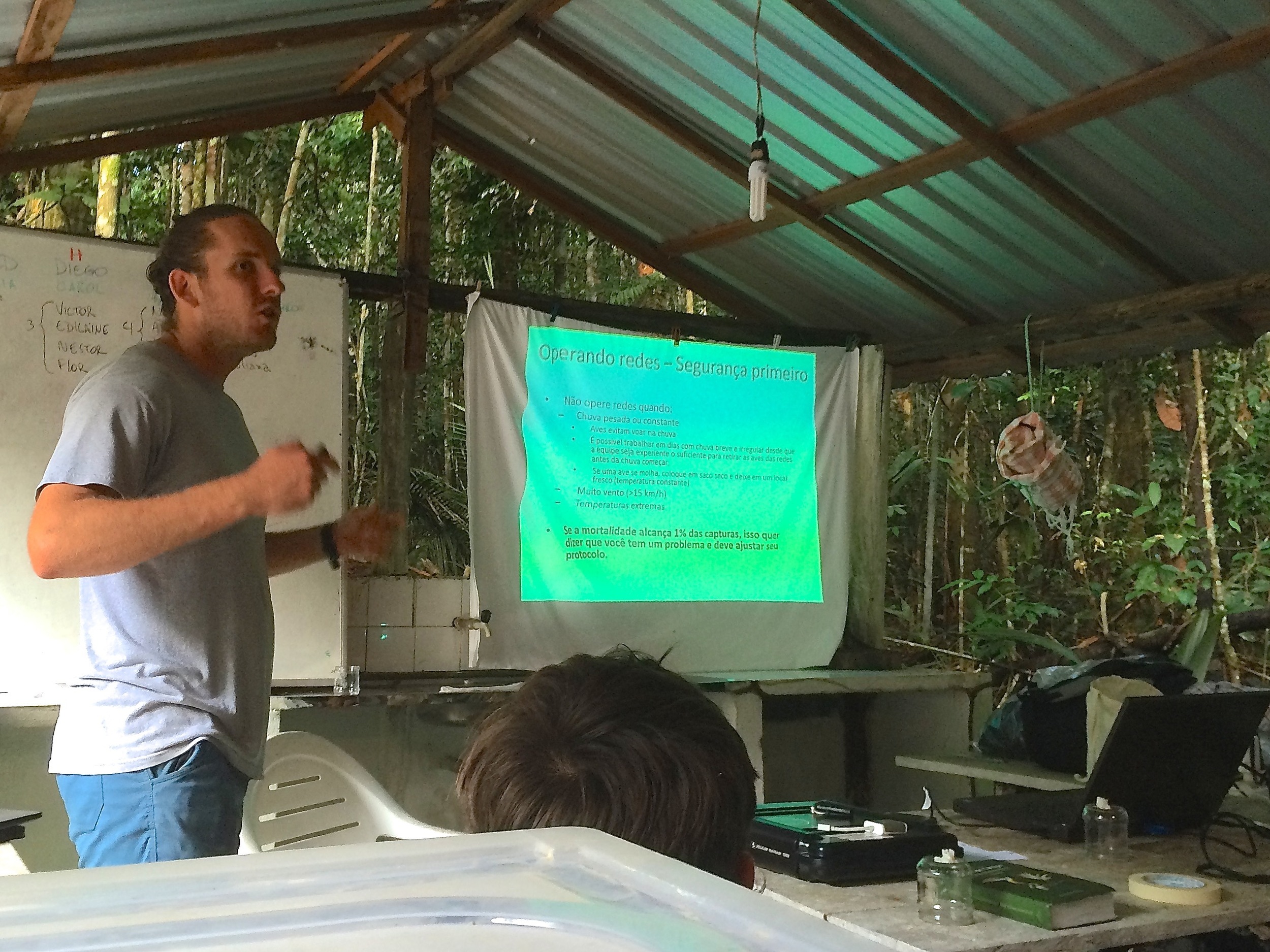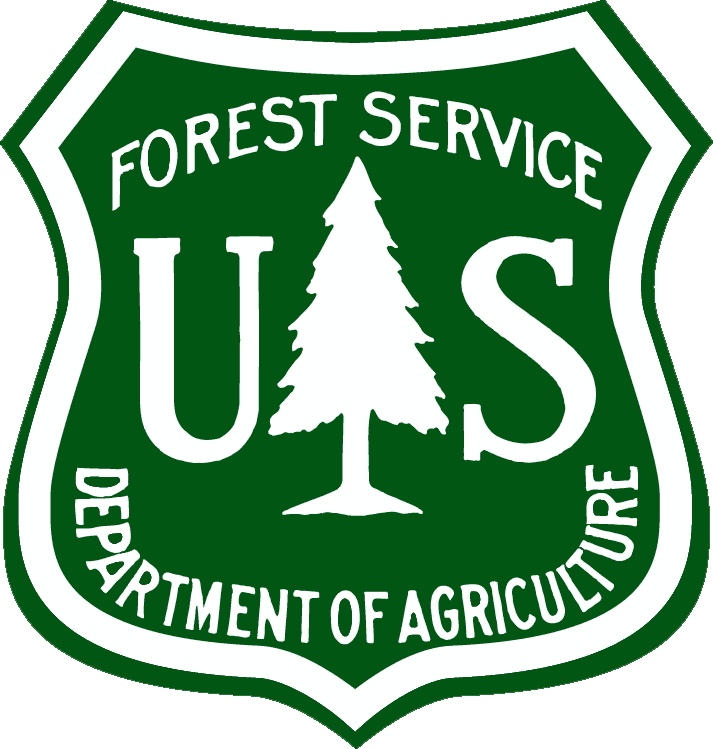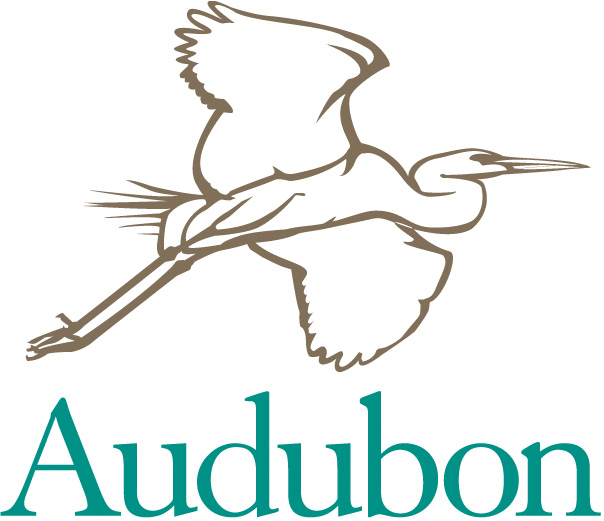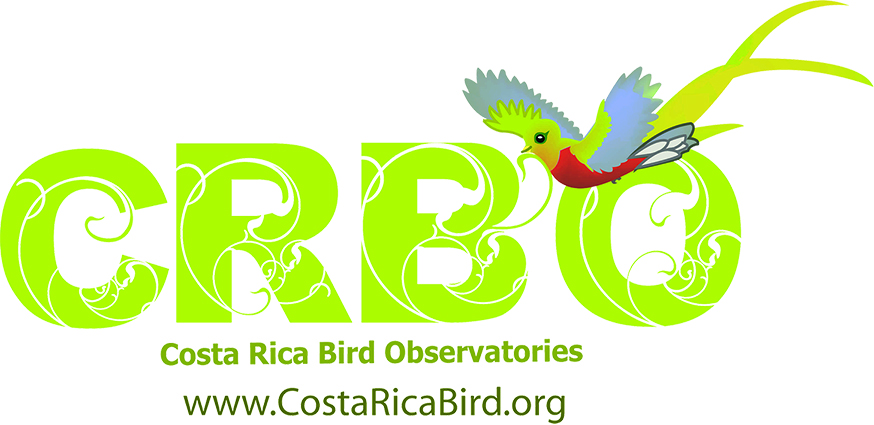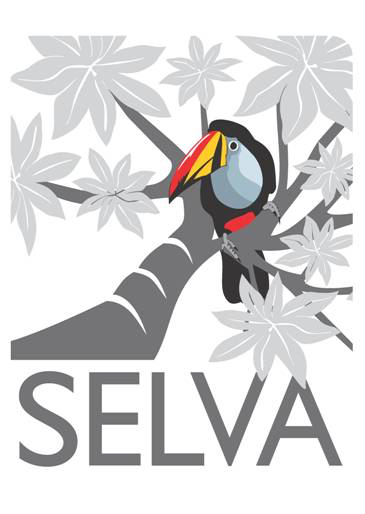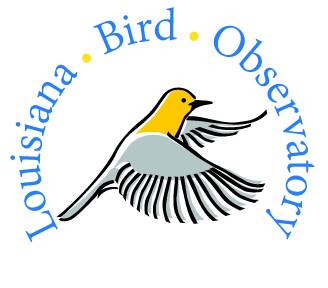Is a bird in the hand worth two in the bush? A group of 30 bird banders set out to tackle this question at the IV Bird Banding and Molt Analysis Course (BBMA). The course took place from July 26 to August 1, at the Camp 41 of the Biological Dynamics of Forest Fragments Project (BDFFP), on upland primary forest of the central Brazilian Amazon.
Ornithologists around the world capture, band, and release wild birds to answer demographic questions, such as how many birds are there, how long do they live, how often do they breed, and how far do they go? There is a lot to learn by just noting the time and location of a recapture, but if we know the age of the bird, the information gets much richer. US ornithologists Erik Johnson and Jared Wolfe, who conducted their PhD fieldwork at the BDFFP, co-developed a system for classifying the age of birds by reading their plumage. The so-called Wolfe-Ryder-Pyle (or W-R-P) system is based on an evolutionary understanding of plumage and molt to helps researchers determine the age of birds by assigning them to one of several stages in a cyclic and life-long series of plumages.
White-plumed antbird, Pithys albifrons caught in a mist net.
Jared Wolfe teaching human safety, bird safety, and data quality.
The BBMA course, now in its fourth edition, aims to disseminate bird-aging skills, while teaching basic techniques for operating a banding station to academic and non-academic ornithologists throughout Latin America. For this purpose, we put together a multi-national team of banding instructors certified by the North-American Banding Council and with wide experience in Latin America. Instructors Pablo Elizondo (Costa Rica), Diego Garcia (Peru), Camila Gomez (Colombia), Flor Hernandez (Peru), Erik Johnson (US), and Jared Wolfe (US) have altogether banded more than 80,000 birds and received advanced training on how to train banders. They generously offered their time to the workshop, which was supported by sixteen different institutions, including the U.S. National Science Foundation and Colombia's Universidad de Los Andes. The course was attended by 25 students from Argentina, Bolivia, Brazil, Colombia, Mexico, and Paraguay. Students and instructors were tirelessly assisted by a team of seven T.A.'s: Jairo Lopes, Pedro V. R. Martins, Ocírio (Juruna) Pereira, Alejandra Pizarro, Glaucia del Rio, Cameron Rutt, and Carolina Schuch.
Wedge-billed woodcreeper (Glyphorynchus spirurus), with two students and Erik Johnson in the background.
Flor Hernandez supervising Natalia Paes with a White-crowned manakin (Dixiphia pipra)
We banded every morning and had lectures in the afternoon for five consecutive days, occasionally greeted by a young Harpy Eagle that is being raised just a stone's throw from Camp 41. In total, we made 361 captures from 62 species, including two Wing-banded antbirds (Myrmornis torquata), one Sreaming Piha (Lipaugus vociferans), and one Golden-collared Woodpecker (Veniliornis cassini)—to mention a few of the most exciting. A questionnaire at the end of the course confirmed that students from a variety of backgrounds did capture fundamental concepts of molt and of the cycle system for aging birds. In addition to teaching Perhaps the key achievement of the course was the efficient combination of basic training to safely capture and process birds, with the advanced training to scientifically ‘read’ a bird’s plumage and learn about its age. Beyond this, we had a remarkable experience of international collaboration and a fantastic time in the field. Of course, two birds in the bush is best because they can breed and produce many more... but one in the hand also goes a long way.
Course participants came from eight countries across the Americas
At the banding station.
Participants in the IV BBMA, from left to right: (standing) Edilaine Marques, Amanda Navegantes, Camile Lugarini, Cecília Luna, André Moraes, Rob Bierregaard, Carolina Schuch, Pedro Martins, Jared Wolfe, Camila Gómez, Diego Garcia, Ever Tallei, Sergio Villaverde, Antônio Cardoso; (seating) Renata Biancalana, Nestor Zapata, Yuli Ortiz, Nadia Escobar, Flor Camacho, Alejandra Pizarro, Vanesa Bejarano, Alexandre Grose, Giuliano Brusco, Natalia Paes, Juliana Carrero, Bruna Costa; (crouching) Isabel Zambrano, Jairo Lopes, Ocírio (Juruna) Pereira, Glaucia del Rio, Pablo (Chespi) Elizondo, Erik Johnson, Vilma Alves, Gonçalo Ferraz. Victor Penha and Cameron Rutt were unaccounted for during the photo—but they were there.
Suporting institutions:


